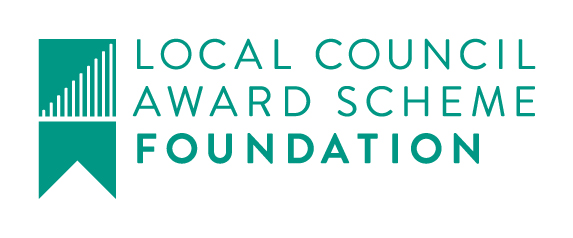Common & Woodland
 Chesham Bois Common and woodland are essential to our community. They are a significant area of amenity, as well as contributing to the character of the village and its history. Bylaws for Chesham Bois Common.
Chesham Bois Common and woodland are essential to our community. They are a significant area of amenity, as well as contributing to the character of the village and its history. Bylaws for Chesham Bois Common.
Ensuring that these areas remain attractive and safe for everyone’s enjoyment requires continual management. The Council consider it vital to conserve the character of Chesham Bois Common; we do not wish it to become a parkland landscape, but we can enhance the woodland in many ways whilst ensuring its long term viability. Common and Woodland WG Remit March 2024.pdf
Management Plan for Chesham Bois Common and Woodlands:
At the turn of the last century you could see across the Common from North Road to South Road; there were a few trees and some gorse but mainly grass. When grazing stopped saplings could grow and gradually trees self-seeded and the wooded area expanded, particularly with ash, sycamore and cherry until the appearance of the Common evolved into the one we know today. Letting nature take its course brings some difficulties: the woods are too uniform in age and species structure to be resilient with a lot of crowded trees of a similar (old) age. There is insufficient space or light for new growth in many areas.
The Forestry Commission recommends that sustainable management of woodlands is crucial to their long term future and that their social and environmental value can be improved gradually. The Parish Council share this view and want to ensure that our unique Common and woods are not only still here for future generations but are also better and healthier. With that in mind worked with experts from the Chilterns Woodland Project, a charity with the Chilterns Conservation Board, to devise a Management Plan for the next 10 years and beyond. This plan was approved by the Forestry Commission in February 2019. Click on thefollowing links for additional information. Operations Map. Restocking Map. Trees to be Felled. Restocking Conditions.
Eastern Section of Common: The Year 2 tree work will be completed by the end of the first week in January 2021. This section of the Common has shown a worrying level of ash dieback and the majority of trees felled were diseased; including three large ash trees behind the war memorial (see photo below). Council may plant a few new trees in key areas but natural regeneration will gradually bring young healthy trees back.
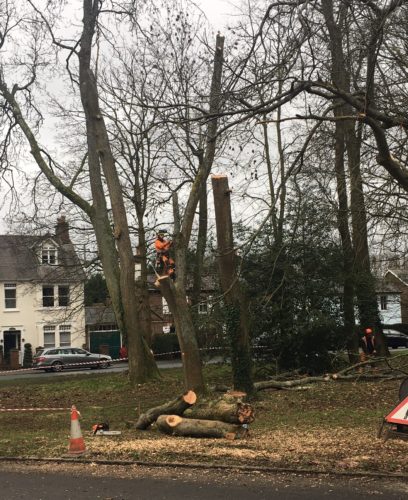
Tenterden Spinney: 140 new trees were planted in November 2020 to promote native species and improve biodiversity as part of our Woodland Management plan.
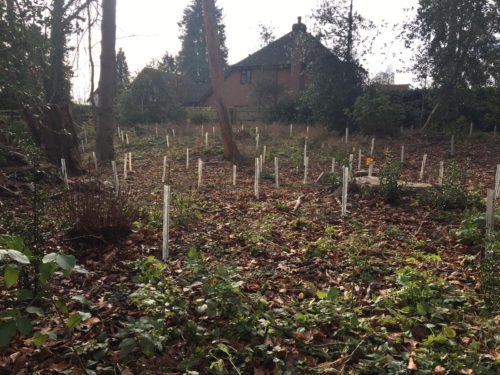
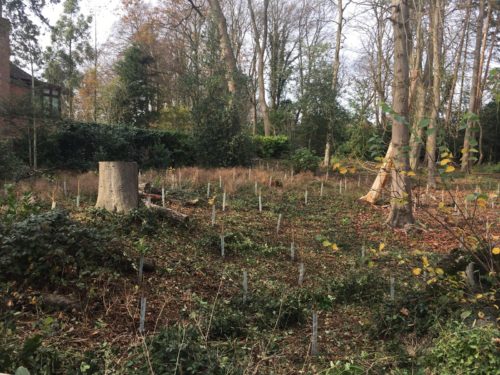
Bois Wood: During November 2020 the first stage of replanting in Bois Wood is almost complete, with further trees to be added following additional ground clearance. The saplings represent a number of native Chiltern species, including oak, maple, grey willow, birch and rowan, which should offer a more resilient mix for future health and to promote biodiversity.
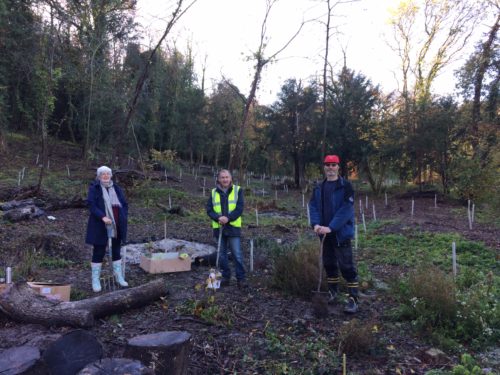
Recent Improvements to Common and Woodlands
Bricky Pond: weed clearance; thinning marginal plants; banks repaired; stop grass encroaching
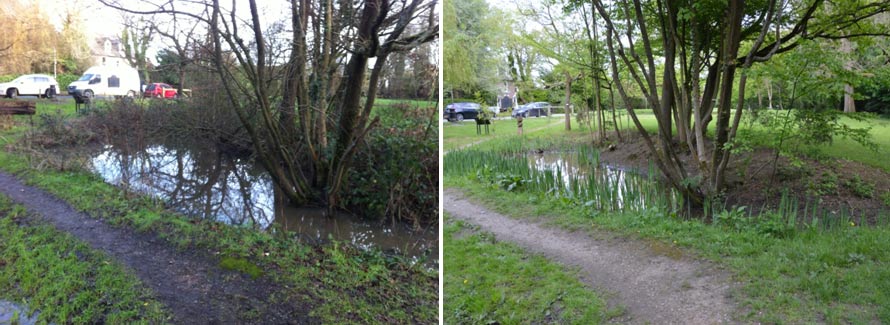
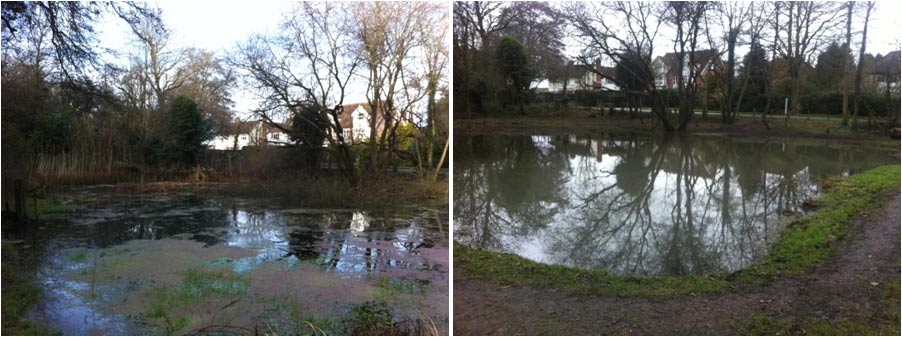
Tenterden Spinney: new fence at Bois Lane end, holly and laurel clearance with The Chiltern Society.
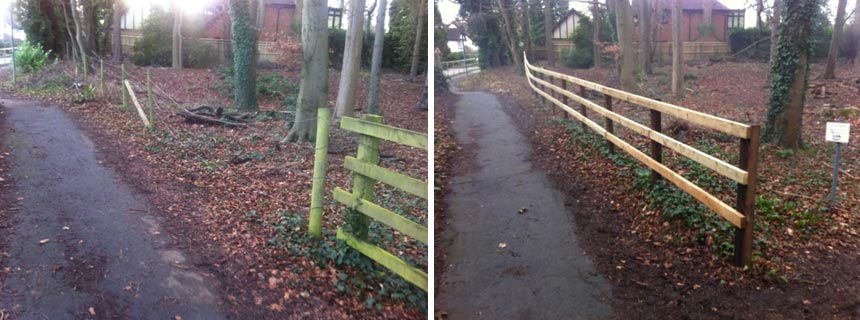
The Common: Remedial work carried out following tree safety survey, laurel clearance with The Chiltern Society and holly clearance.

Bricky Pond – a history
Chesham Bois Common consists of some 40 acres of amenity woodland, including bridleways, footpaths and dells, as well as two large open areas. One of the open areas alongside North Road contains Bricky Pond.
At the turn of the 20th century, the common was an open expanse of turf with small groups of trees and clumps of bracken and gorse. It had a number of small ponds and dells, but only Bricky Pond was ever recorded on maps. Research into the history of the pond shows that it is recorded on all OS maps (which use a scale of 25” to the mile) dating from the late 1800s. The pond is featured on a map that is part of a survey commissioned by the Duke of Bedford in 1736 but a 1716 tithe map prepared for Viscount Cheyne does not show the pond.
The pond is believed to have been formed as a result of clay diggings for brick making, hence its name. Brick making began around the early 17th century with kilns often being fired by furze that grew on the common. The closest brickworks to the pond appear to have been in a meadow behind Laurel Court, at the corner of North Road and Long Park.
Older residents recall skating on the pond in winter and boating in the summer. Carts would be driven into the shallower part of the pond so that the wooden wheels would swell, thus improving the efficiency of the brakes on the steep hill down into Chesham. There is a story, albeit unsubstantiated, of an unfortunate horse complete with milk cart attached, being stuck in a sinking bog at one end of the pond.
Bricky Pond is a major feature of the common and it is fed entirely by surface water so is subject to seasonal variations in water level. By 1995 it had become very overgrown and had virtually dried up and a group parish councillors and local residents joined forces to restore the pond. Before any work started, a full survey was carried out and a plan formulated in conjunction with the London Ecology Unit, Landscapes Naturally and the British Trust for Conservation Volunteers. The pond needed to be dug out and relined, and various options were considered. It was decided that, being a dewpond, traditional methods would be best. Puddled clay is the traditional method for lining porous waterway bottoms. To “puddle” simply means to pound clay and water together into a dense mass which resists water penetration. Puddling breaks down the clay’s structure, closes fissures and forces out air bubbles. The clay becomes very plastic, just as happens when it’s made into pottery. The group was introduced to a local company which specialised in puddled clay lined ponds and work was set to start mid-December 1995.
Three Valleys Water installed a standpipe and hose for the duration of the project so that water would be available for the puddling of the clay and also to fill the pond. Local volunteers, including Guides, Scouts and Chesham Bois schools were recruited to help with replanting.
At 6.30am on Tuesday 19th December a lorry arrived to deliver the first 20 tonnes of Oxford Blue clay and having tipped it near the pond, the driver found he was stuck in the mud. Despite efforts to dig it out, it was nearly two hours before he was finally freed. That night it poured with rain and the pond, which had been dry for so long, was rapidly filling with water so a pump was hired to discharge the water into adjoining clay pits so that work could continue. Before the end of the day, the excavator had got stuck in the mud and couldn’t be freed. That night, temperatures fell and what water was left in the pond froze, as did the pump. Everything had to be thawed out before work could restart. Further attempts were made to pull the digger out, but the main arm sheared off so a tracked vehicle had to be brought in to pull it out. The clay was fighting back!
Later that same day when checking on progress, the project leader was pointed in the direction of large cans of diesel where the workmen had carefully placed what turned out to be a World War ll high explosive hand grenade, complete with its pin. Police were called, and the area evacuated while bomb disposal experts made it safe.
When work restarted after Christmas the workmen discovered that where the digger had sunk into the clay the previous week was actually where the deepest deposits of clay had been dug for the original brickworks dating back to the 18th century. For safety reasons the hole was filled with hardcore.
A further 150 tonnes of clay was delivered and a Family Puddling Fun Day was held on 30th December, where around 300 people came to help tread it in to help line the pond. Despite the freezing cold weather there was a great sense of community, helped by hot drinks, barbecue and raffle supported by many local businesses.
The main work continued without further incident and was completed by early February 1996 followed by the planting of oxygenating, marginal and emergent plants.
The pond project was supported by various grants, one of which required some form of event to celebrate the completion of the restoration. The first village fete took place in June 1996 and was opened by John Craven who at that time lived nearby. Most of the voluntary organisations which took part in that inaugural event still take part today.
Maintenance was originally done by volunteers, but it soon became clear that regular work was needed so professionals were brought in.
Over the past 5 years or so the pond has begun to deteriorate partly due to lack of rainfall and also the growth of pond vegetation. It has been suggested that it may be leaking and that it should be lined with a butyl liner.
Chesham Bois Parish Council sought advice from BBOWT and commissioned a Great Crested Newt survey, a botanical survey and an invertebrate survey, to be followed by a restoration and management plan. Details of these can also be found on our website
Overall the pond is in good condition and is not leaking. The Council is following the advice in the management plan, where major work is carried during the winter months, so visitors to Chesham Bois common should soon see improvements. The Council installed new seating around the pond in May 2022. The rustic benches were made using timber from trees which had been felled following the tree safety advice



